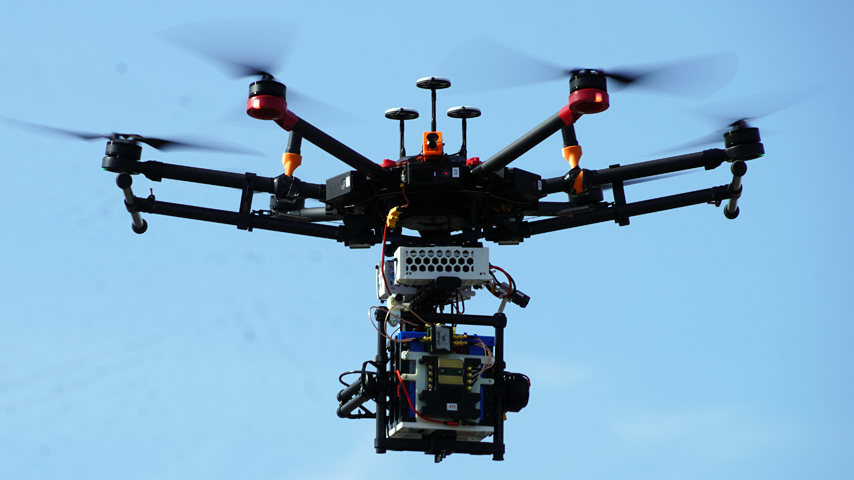5 Museums of Technology and Industry for Summer Road Trips
5 Museums of Technology and Industry for Summer Road Trips


Get a close-up view of the engineering feats of the past in these five fabulous museums.
Summer vacation can be a great unlearning experience for schoolchildren, who often combine too much screen time with very little motivation to do anything except keep the start of school at bay. Family vacations can be much the same, whether the destination is a theme park, campground, or grandma’s house.
But for parents of budding mechanical engineers, there are plenty of stops along potential road trip routes that can offer an up-close look at the technology of the past and present. Not only do science and industry museums provide exhibits more diverting than whatever is on the phone, they can spur the imagination and maybe kindle a love of machines that will carry over to a study of engineering in the future.
Recently, we put the spotlight on the Saugus Iron Works, an ASME landmark in Massachusetts that now hosts a large technology museum. Here are five more museums that celebrate technology and can inspire awe and wonder.
Jeffrey Winters is editor in chief of Mechanical Engineering magazine.
But for parents of budding mechanical engineers, there are plenty of stops along potential road trip routes that can offer an up-close look at the technology of the past and present. Not only do science and industry museums provide exhibits more diverting than whatever is on the phone, they can spur the imagination and maybe kindle a love of machines that will carry over to a study of engineering in the future.
Recently, we put the spotlight on the Saugus Iron Works, an ASME landmark in Massachusetts that now hosts a large technology museum. Here are five more museums that celebrate technology and can inspire awe and wonder.
Griffin Museum of Science and Industry (Chicago)
Want to see a coal mine and an actual spaceship in the same afternoon? Want to walk through a World War II-era submarine as well as the first diesel-powered, streamlined stainless-steel train? Chicago’s Museum of Science and Industry (recently renamed after a $125 million gift from Kenneth C. Griffin) features all these and more. The museum—a Chicago institution housed in a building constructed for the 1893 World’s Fair—has more of a technological focus than many science museums. One special exhibit (through October 2024) focuses on the technology that brings to life the James Bond spy movies.National Museum of Industrial History (Bethlehem, Pa.)
The Smithsonian Institution has many great museums focused on technology (the Air and Space Museum being perhaps the most famous) but this gem in the steelmaking center of Bethlehem, Pa., is the only one devoted to the heavy industry that built the United States in the late 19th century and early 20th century. Opened in 2016 on the site of a former steel mill’s electric repair shop, the museum features such machines as a Jacquard loom, a 20-foot tall Nasmyth steam hammer, and a 115-ton Corliss steam engine in the process of being restored to operating condition.Western Museum of Mining and Industry (Colorado Springs)
Another museum devoted to large machines, this museum in Colorado Springs just outside the campus of the U.S. Air Force Academy features a number of steam engines in working condition, including a 1906 single cylinder counter-flow engine, a Downie steam pump, and an 1895 Corliss steam engine. The exhibits also include a recreation of a mine shaft as well as a blacksmith shop and steam shovel outdoors on the grounds of the museum. Admission also enables visitors to pan for gold on the site, though there are no guarantees that anyone will strike it rich.Mystic Seaport Museum (Mystic, Conn.)
The Age of Sail was brimming with complex technology developed over centuries, much of which is now obsolete and lost. The Mystic Seaport Museum in Connecticut preserves some of that technology in a seaport village that has been restored and turned into a so-called living museum with interpreters who interact with visitors. For most, the historic ships are enough of an attraction: climbing through the Charles W. Morgan, the last existing whaler, is fascinating. But the 200-foot-long rope walk, which still houses machines that twisted hemp into lengths of rope, and the facility routinely restores and maintains wooden ships housed in other museums, such as the Mayflower II, a reproduction of the 66-foot tall ship that brought the Pilgrims to America.Henry Ford Museum of American Innovation (Dearborn, Mich.)
The Henry Ford, as it is colloquially known, is something of the Walt Disney World of history and technology museums, housing a village depicting how Americans have lived from colonial times to the present as well as tours of Ford Motor Co.’s River Rouge plant. But the Museum of American Innovation is a sprawling, eclectic collection of historical machines and technology like no other. There’s an Oscar Meyer Wienermobile, the Fokker Trimotor airplane that was the first to fly over the North Pole, a prototype of Buckminster Fuller's prefabricated Dymaxion house, several steam engines and railway engines—even a Model T that’s been “exploded” to showcase all its parts. The Henry Ford receives 1.7 million visitors a year, so if you go, expect crowds.Jeffrey Winters is editor in chief of Mechanical Engineering magazine.











